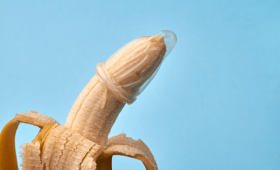Introduction: What’s the Buzz About the G-Spot?
The “G-Spot” has captured imaginations, curiosity, and conversations for decades. Often regarded as the Holy Grail of female pleasure, the elusive G-spot is said to unlock new dimensions of intimacy and satisfaction. But here’s the catch—it isn’t as simple as a treasure chest marked with an X. This special zone requires exploration, patience, and communication.
But fear not! Whether you are a curious individual or part of a couple on a mission, this guide offers everything you need to embark on this playful quest. Let’s dive in with an open mind, some anatomical knowledge, and a sprinkle of humor.
The Science and Mystery: What Exactly Is the G-Spot?
The G-spot, short for “Grafenberg Spot,” is named after Dr. Ernst Grafenberg, the German gynecologist who first described it in the 1950s. This area is often defined as a sensitive spot located along the anterior (front) wall of the vagina, about 2–3 inches inside. When stimulated, it’s believed to provide deeper sensations than clitoral stimulation alone, potentially resulting in intense pleasure or even female ejaculation.
Is It Real? The Debate Continues
Despite popular claims, some researchers argue that the G-spot might not be a single, well-defined structure but part of a network of nerves connected to the clitoris, urethra, and vagina. Think of it less as a button to press and more as a pleasure zone to explore.
Key Points:
- Anatomically, the G-spot is part of a larger system called the clitourethrovaginal complex (CUV).
- Sensitivity varies from person to person; some women find it extremely pleasurable, while others feel indifferent.
- Whether it’s a specific spot or part of a broader pleasure network, what matters most is the journey to find out what feels good!
Setting the Mood: The Importance of Relaxation and Communication
Before embarking on the G-spot adventure, creating the right environment is crucial. Relaxation isn’t just a luxury—it’s essential for heightened sensitivity and deeper intimacy. Stress or pressure to “perform” can interfere with pleasure, so approach this journey with curiosity, not expectation.
Tips for a Relaxing Experience:
- Lighting: Dim the lights or use candles to create a warm ambiance.
- Music: Play soothing music to set the tone.
- Communication: Talk openly about your expectations, desires, and boundaries. A playful approach makes everything easier.
- Use Lubrication: The G-spot responds well to pressure and movement, and using water-based lubricant ensures comfort and reduces friction.
The goal isn’t just to “find” the G-spot but to enjoy the process. Remember, intimacy is a two-way street, so pay attention to feedback and adjust accordingly.
A Roadmap to Exploration: How to Find the G-Spot
Here’s where the fun begins! Ready to start exploring? Take a deep breath, relax, and follow these steps to maximize your chances of discovering the G-spot.
Step 1: Get Comfortable
Whether you’re exploring solo or with a partner, find a comfortable position. Lying on your back with bent knees or in a semi-reclined position works well.
Step 2: Start Slow with Foreplay
The G-spot tends to respond better when arousal levels are high. Start with clitoral stimulation or other forms of foreplay to build excitement. The more relaxed and aroused you feel, the more receptive your body will be to G-spot stimulation.
Step 3: Locate the Anterior Wall
Using your fingers (or your partner’s), gently insert them into the vagina and curve them upward in a “come-hither” motion. Focus on the front wall of the vagina, about 2–3 inches inside. The G-spot may feel slightly rougher or spongier than the surrounding tissue.
Step 4: Experiment with Pressure and Movement
The G-spot often responds best to consistent pressure and rhythmic movements. Experiment with light tapping, circular motions, or firm pressure to see what feels best. Pay close attention to your body’s responses and adjust the pressure as needed.
Signs You’re on the Right Track
As you explore, how do you know if you’re stimulating the G-spot? Here are some common signs to look out for:
- A growing sense of fullness or pressure.
- Increased lubrication or wetness.
- Stronger contractions or muscle responses in the pelvic area.
- A desire for deeper or firmer pressure.
- Feelings of intense arousal or emotional release.
Not everyone reacts the same way—some might experience a burst of intense pleasure, while others find the sensation subtle but enjoyable. There’s no right or wrong way to respond.
Common Myths About the G-Spot—Debunked
Myth 1: Every Woman Has the Same G-Spot Experience
In reality, pleasure varies widely between individuals. For some, the G-spot is the key to ecstasy; for others, it’s just another part of the puzzle.
Myth 2: The G-Spot Is a Magic Orgasm Button
The idea that finding the G-spot will instantly lead to powerful orgasms is a myth. Intimacy is about more than mechanics—it involves emotions, connection, and exploration.
Myth 3: If You Can’t Find It, You’re Doing Something Wrong
There’s no right or wrong way to experience pleasure. What matters most is enjoying the process and learning more about what works for you and your partner.
Tools and Toys for G-Spot Exploration
While fingers are the most intuitive tool for G-spot exploration, there are also plenty of toys designed specifically for this purpose. Here are some popular options to enhance your journey:
- Curved Vibrators: Designed to target the G-spot with precision.
- G-Spot Wands: Long, slim wands with a curved tip for deeper stimulation.
- Dual-Stimulation Toys: These combine clitoral and G-spot stimulation for a more comprehensive experience.
When selecting a toy, look for one with a curved or angled tip that can reach the front wall of the vagina easily. Always use plenty of lubricant and clean your toys before and after use.
The Emotional Side of G-Spot Exploration
Exploring the G-spot isn’t just a physical journey—it can also be an emotional experience. For some, it leads to feelings of empowerment and self-discovery. Others may experience unexpected emotional releases, such as laughter or tears. This is completely normal and can even enhance intimacy.
Whether you’re exploring solo or with a partner, approach the experience with openness and kindness. Celebrate the journey rather than focusing on the destination.
Conclusion: Embrace the Adventure
The quest for the G-spot is as much about connection, curiosity, and communication as it is about pleasure. Remember, every body is different, and the journey is unique to each person. Rather than stressing over results, enjoy the process of discovering new sensations and deepening your understanding of intimacy.
The G-spot might not be a one-size-fits-all magic button, but it offers an exciting opportunity to explore pleasure in new ways. Whether you find it or not, the real reward lies in the shared experiences, the laughter, and the intimacy you build along the way. So go forth, stay curious, and most importantly—have fun!



